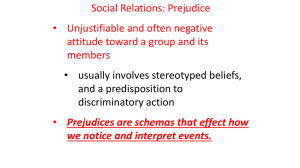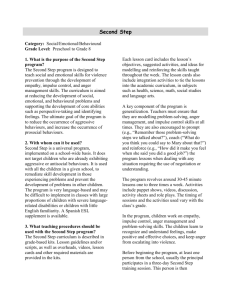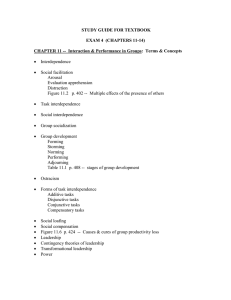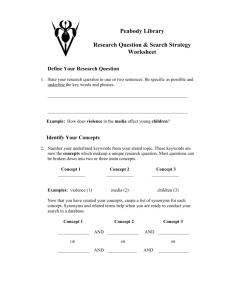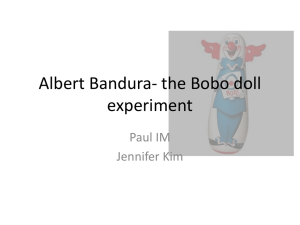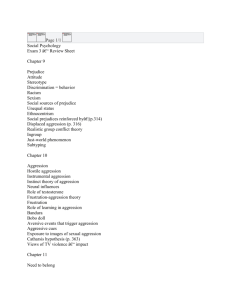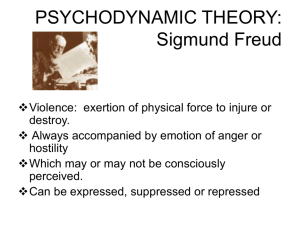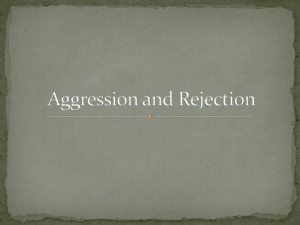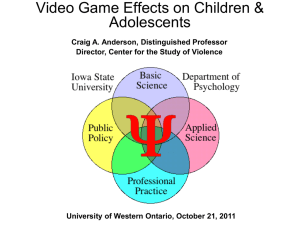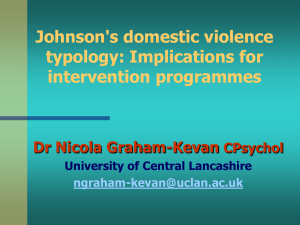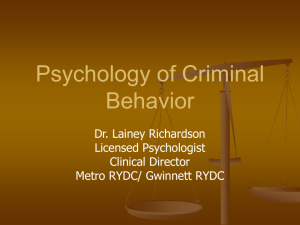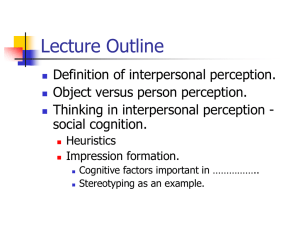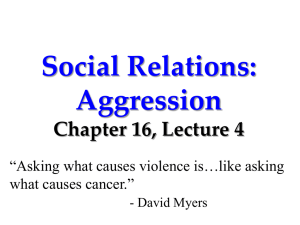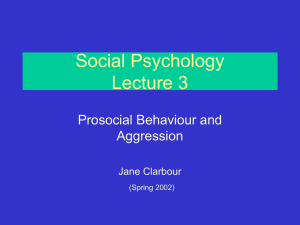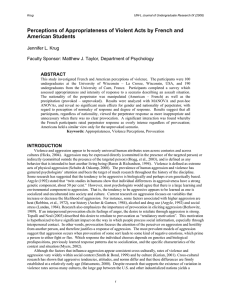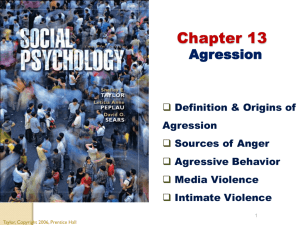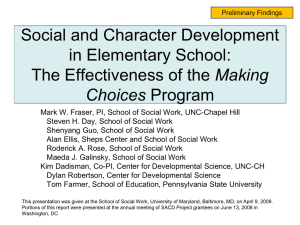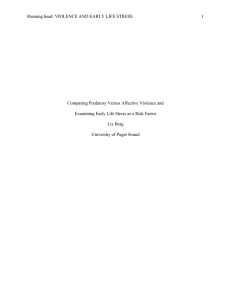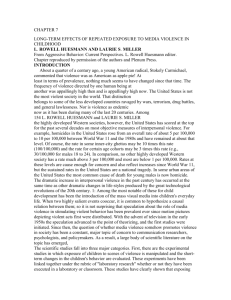Study Guide 1
advertisement
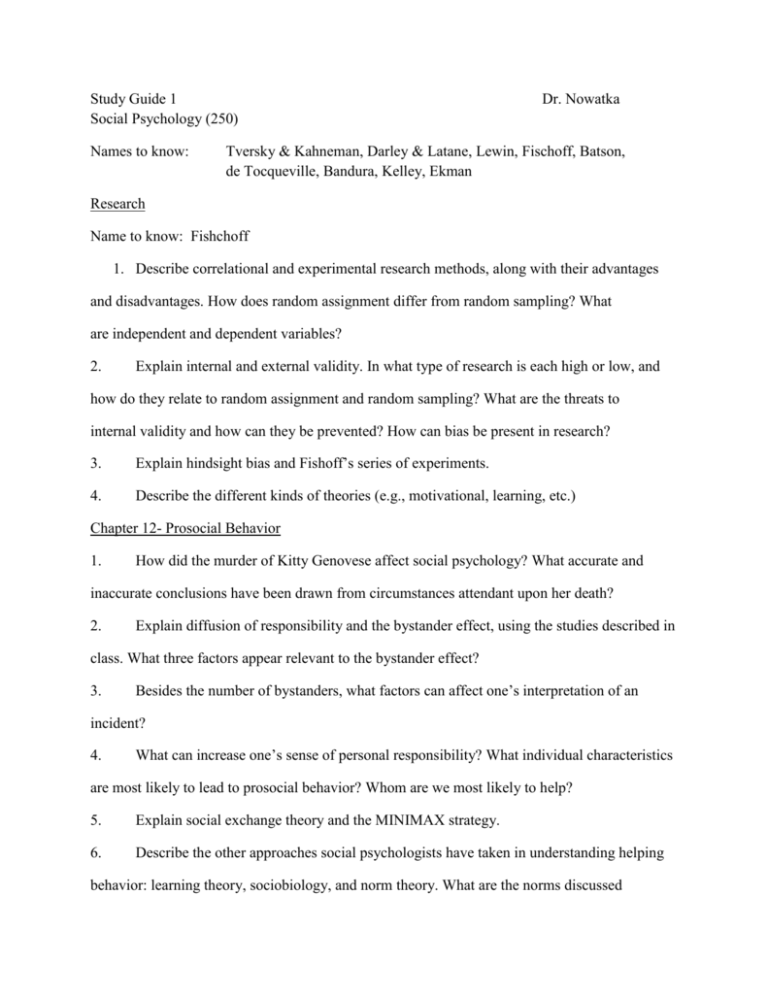
Study Guide 1 Social Psychology (250) Names to know: Dr. Nowatka Tversky & Kahneman, Darley & Latane, Lewin, Fischoff, Batson, de Tocqueville, Bandura, Kelley, Ekman Research Name to know: Fishchoff 1. Describe correlational and experimental research methods, along with their advantages and disadvantages. How does random assignment differ from random sampling? What are independent and dependent variables? 2. Explain internal and external validity. In what type of research is each high or low, and how do they relate to random assignment and random sampling? What are the threats to internal validity and how can they be prevented? How can bias be present in research? 3. Explain hindsight bias and Fishoff’s series of experiments. 4. Describe the different kinds of theories (e.g., motivational, learning, etc.) Chapter 12- Prosocial Behavior 1. How did the murder of Kitty Genovese affect social psychology? What accurate and inaccurate conclusions have been drawn from circumstances attendant upon her death? 2. Explain diffusion of responsibility and the bystander effect, using the studies described in class. What three factors appear relevant to the bystander effect? 3. Besides the number of bystanders, what factors can affect one’s interpretation of an incident? 4. What can increase one’s sense of personal responsibility? What individual characteristics are most likely to lead to prosocial behavior? Whom are we most likely to help? 5. Explain social exchange theory and the MINIMAX strategy. 6. Describe the other approaches social psychologists have taken in understanding helping behavior: learning theory, sociobiology, and norm theory. What are the norms discussed in class and in your textbook? 7. Describe Batson’s model of helping motives and behavior. 8. Which methods are effective and which are ineffective for encouraging prosocial behavior? Chapter 13 - Antisocial Behavior 1. Describe the development of aggressive behavior. What is the research on interventions related to attributions? 2. How do operant conditioning and social learning explain aggression? Explain the role of schemas and norms. What are deindividuation, dehumanization, and desensitization? 3. What sources or conditions are likely to lead to aggression? What did de Tocqueville add? 4. Explain stimulus cues and the Weapons Effect. How does information from other countries support the laboratory findings? 5. What does the body of evidence suggest about the effects of TV violence on aggression? What are likely mediators of (causal links between) TV violence and aggression? In what population(s) are the effects of these mediators most prominent? 6. Aside from those who watch TV violence, who is likely to be violent and why? 7. What strategies are more versus less useful in attempting to control aggression? 8. What is known about sexual violence and the media? Chapters 2 & 3 - Person Perception 1. Explain the following biases: the illusory correlation and the role of mood on a topic. 2. What are the basic principles of impression formation? Upon what information do we base our impressions? How do we integrate different information? What are the effects of goals on the impressions that people form? 3. What are the advantages and disadvantages of schemas? What role does affect play in schemas? What factors determine which schema is used? 4. Explain heuristics, including the conjunction error, the availability heuristic, and the anchoring heuristic. Explain the halo effect, the positivity effect, and the negativity effect. Explain the actor-observer effect. 5. In impression formation, what factors lead people to rely more on schemas, as opposed to information about the person’s unique attributes? 6. What is the self-fulfilling prophecy? When does it not occur? 7. When do we use situational versus dispositional attributions in understanding others’ behavior? What is the fundamental attribution error? Why does the actor-observer effect occur and when is it less likely to occur? 8. Explain false consensus, false uniqueness, and the self-serving bias. 9. According to Ekman, what are display rules? List his 5 categories of nonverbal behaviors, and whether each is cultural or biological, conscious or unconscious. What are the historical reasons why the universality of emotion was questioned? 10. Explain what is meant by central traits, according to Asch. How do they affect the context, or how other traits are perceived? What is the evidence, from Asch and from Kelley, on the centrality of the warm-cold dimension? 11. Why are first impressions so resistant to change?
